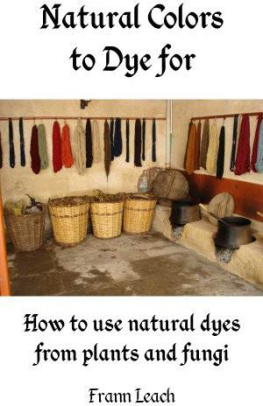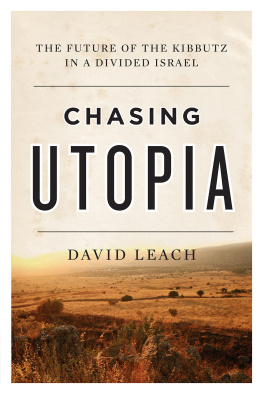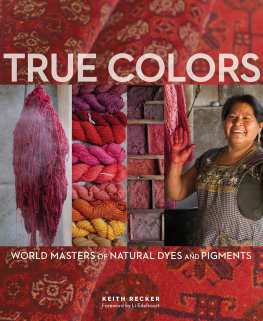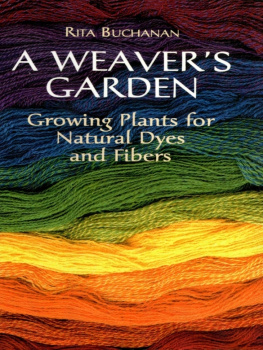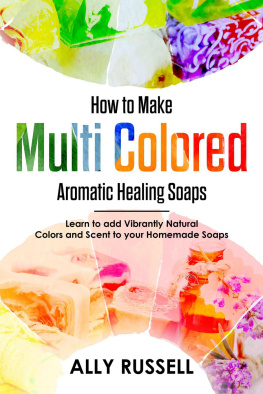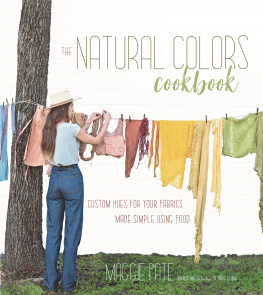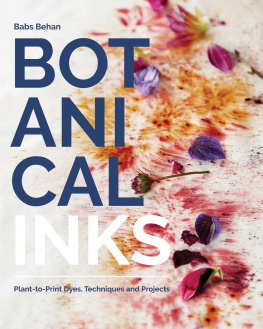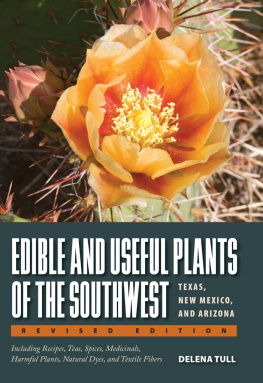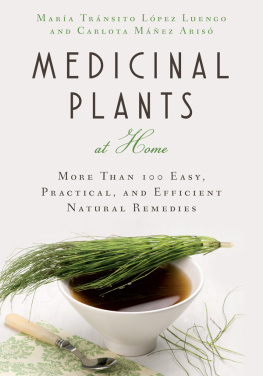This ebook is copyright 2012 Frann Leach.
TABLE OF CONTENTS
Century Craft Brought Up To Date
Dye Recipes:
A 19 th Century Craft Brought Up To Date
Up till around 1850, all dyes were plant based. Whilst it is rare to use plant dyes commercially today, home dying using plant materials is becoming more popular.
Apart from indigo and dyes based on mushrooms, most herbal dyes are not 'fast', that is the colors will fade quite quickly. To avoid this, and to produce different colors, an additional ingredient called a mordant is often included. There are a number of these, including the following, listed by the name used in dyers' catalogues:
Acetic acid (or vinegar)
Alum (potassium aluminium sulphate)
Ammonia (ammonium hydroxide)
Blue vitriol (copper sulphate)
Caustic soda (sodium hydroxide)
Chrome (either potassium dichromate or sodium dichromate)
Copperas or Green vitriol (ferrous sulphate)
Cream of tartar (potassium bitartrate)
Lime (calcium oxide)
Potash (potassium carbonate)
Tannic acid
Tartaric acid
Tin (stannous chloride)
As you can see, many of these can be bought in your local supermarket. The others are probably available online, although the one you will need most often is alum. This may be available at chemists, craft stores, some outdoor specialists (for purifying water) and large department stores in the section where they sell men's shaving kits alum is sometimes sold for use as a "styptic" to staunch bleeding.
Equipment Needed for Dying
A large set of kitchen scales (big enough to get the material to be dyed into the pan)
A 5 gallon pot made of copper, stainless steel or enamelware (iron is ok for dark colors)
A measuring jug
A cooking thermometer
One thick piece of wood for each color, for stirring
A set of plastic measuring spoons
A supply of soft water
Several buckets for rinsing
Rubber gloves
Laundry tongs
Basic Dying Method
- Wash the material to be dyed so as to remove any natural oils or dressing with mild soap and rinse well. Raw wool may need to be washed repeatedly to remove all the lanolin.
- If you are using a mordant, the material then needs to be processed with the mordant solution.
The method is different for each type of material: - cotton and linen are boiled in the solution
- wool is simmered
- silk is simply soaked in hot liquid.
- When mordanting is complete, the material is rinsed and allowed to dry (except when using chrome mordant).
- To prepare the dye bath, chop or crush the plant material, soak in water for 12-24 hours and then boil for 2 hours.
- Strain out the plant material and add enough water to make up to about 4 gallons.
- The material to be dyed must be wet when it is put into the dye bath, so dip it in water and wring out beforehand.
- Heat the dye bath containing the material to no more than 70C (160F) for silk, and to a simmer for wool, cotton and linen. Continue heating for 20 minutes, then stir in 4 tablespoons of tartaric acid and half a cup of Sodium sulfate (Glauber's salt). Simmer for another 20 minutes and remove fabric or yarn.
- Rinse repeatedly, starting with water just a little cooler than the dye bath liquid, and gradually progressing through a series of rinses, each a bit cooler than the previous one, until the rinse water remains clear.
- The material can then be dried and is ready for use.
Following is a table showing the colors obtained. In most cases, wool takes color better than cotton or linen, which will end up lighter in color from the same dye mixture. Silk generally gives similar results to wool.

Blacks and Grays
Color : Black for wool
Plant : Logwood ( Haematoxylum campechianum )
Mordant : Chrome
1lb wood chips to each pound dry weight of material
Color : Black for all materials
Plant : Logwood ( Haematoxylum campechianum )
Mordant : Copperas (4 ounces)
8 ounces wood chips to each pound dry weight of material
Color : Brown black for wool
Plant : Plums and custard/Red-haired agaric ( Tricholompsis rutilans )
Mordant : Copperas (4 ounces)
4 gallons mushrooms to each pound dry weight of material
Color : Gray - brown for wool, cotton, linen
Plant : Red Sumac ( Rhus sp. )
Mordant : Copperas (4 ounces)
4 gallons berries, twigs or leaves to each pound dry weight of material
Color : Gray - black for wool, cotton, linen
Plant : Sassafras ( Sassafras sp. )
Mordant : Copperas (4 ounces)
4 gallons twigs and leaves to each pound dry weight of material
Color : Gray for silk
Plant : Sunflower ( Helianthus annuus )
Mordant : Blue vitriol
2lb seeds to each pound dry weight of material
Color : Blue-gray for wool
Plant : Alkanet ( Alkanna tinctoria )
Mordant : None
8 ounces roots to each pound dry weight of material
Color : Gray blue for wool
Plant : Blue spine/Blue tooth ( Hydnellum caeruleum )
Mordant : Alum
4 gallons mushrooms to each pound dry weight of material
Blues
Color : Light blue for wool
Plant : Blue spine/Blue tooth ( Hydnellum caeruleum )
Mordant : Tin
4 gallons mushrooms to each pound dry weight of material
Color : Blue or green for wool
Plant : Chicken of the woods ( Laetiporus sp. )
Mordant : various
4 gallons mushroom to each pound dry weight of material
Color : Blue or green for wool
Plant : Chicken of the woods ( Laetiporus sp. )
Mordant : various
4 gallons mushroom to each pound dry weight of material
Color : Blue-gray for all materials
Plant : Common elder ( Sambucus nigra )
Mordant : Tin
4 gallons leaves to each pound dry weight of material
Color : Greeny blue for wool, silk
Plant : Common elder ( Sambucus nigra )
Mordant : Chrome
4 gallons berries to each pound dry weight of material
Color : Blue for all materials
Plant : Logwood ( Haematoxylum campechianum )
Mordant : None
1lb wood chips to each pound dry weight of material
Color : Blue for all materials
Plant : Logwood ( Haematoxylum campechianum )
Mordant : None
1lb wood chips to each pound dry weight of material
Color : Dark blue for silk
Plant : Logwood ( Haematoxylum campechianum )
Mordant : Chrome
1lb wood chips to each pound dry weight of material
Color : Dark blue-gray for all materials
Plant : Logwood ( Haematoxylum campechianum )
Mordant : Copperas (3 ounces)
8 ounces wood chips to each pound dry weight of material
Color : Blue-gray for wool, cotton
Plant : Sunflower ( Helianthus annuus )
Mordant : Copperas (4 ounces)
2lb seeds to each pound dry weight of material
Color : Blue for wool
Plant : Woad ( Isatis tinctoria )
Mordant : Alum, potash
4 gallons leaves to each pound dry weight of material
Browns and Tans
Color : Reddish tan for all materials
Plant : Alkanet ( Alkanna tinctoria )
Mordant : Alum
8 ounces roots to each pound dry weight of material
Color : Tan for all materials
Plant : Barberry ( Berberis vulgaris )
Mordant : Alum
4 gallons above ground parts to each pound dry weight of material
Color : Tan for wool, silk
Plant : Beet ( Beta vulgaris )
Mordant : Alum
10lb roots to each pound dry weight of material
Color : Brown for wool
Plant : Black Bulgar ( Bulgaria inquinans )
Mordant : Blue vitriol
4 gallons mushrooms to each pound dry weight of material
Color : Chocolate brown for wool
Plant : Black Bulgar ( Bulgaria inquinans )
Mordant : Tin
4 gallons mushrooms to each pound dry weight of material
Color : Gray brown for wool
Plant : Black Bulgar ( Bulgaria inquinans )
Next page
